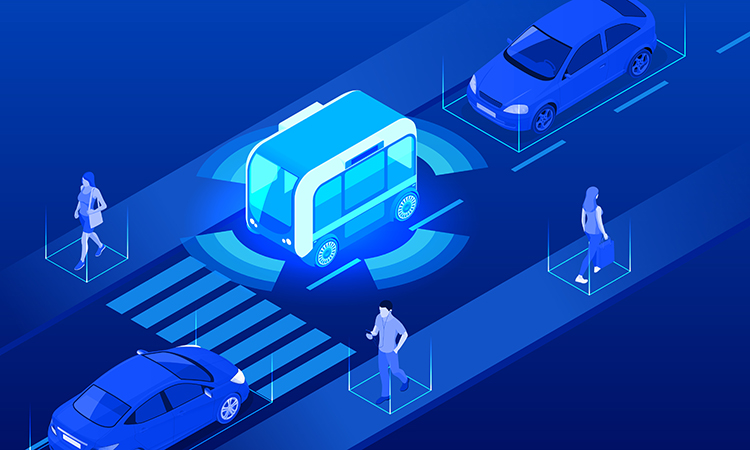Navigating the Landscape of Infrastructure Technologies: Addressing Challenges and Crafting Solutions for Intelligent Mobility in Urban Environments
Smart mobility solutions can transform city living and improve quality of life—but are difficult to implement at scale. A collaborative, ecosystem approach could be the way ahead.
In the backdrop of escalating urban challenges such as traffic congestion, lengthy commutes, noise, and pollution, cities worldwide grapple with the strain on infrastructure exacerbated by the global shift toward urban living. With 56 percent of the global population already residing in cities and an anticipated rise to nearly seven in ten by 2050, the need for efficient urban mobility solutions becomes paramount.
To address these challenges, forward-thinking cities leverage technology to manage existing transport infrastructure effectively, aiming to preserve and revitalize neighborhoods for enhanced vibrancy. Numerous projects worldwide focus on improving urban transportation systems, encompassing initiatives like public-transport infrastructure development, digitization of transport processes, and the expansion of pedestrian and cycling networks.
For instance, Amsterdam, a pioneer in reducing private car usage since the 1970s, plans to implement mobility hubs integrating various transport modes with shared options like electric bikes or scooters. Paris aims to add 180km of dedicated bicycle lanes and triple bike parking spots citywide.
Urban mobility solutions, however, are intricate and city-specific, challenging replication and scalability. The equity principle, ensuring equal access to the entire population without discrimination, remains pivotal. This article delves into recent trends shaping urban mobility, spotlighting digital technologies and infrastructure advancements as responses to these trends. It also explores the challenges of implementing such technologies at scale, emphasizing compliance with local privacy and data protection regulations that vary by geography.
Cities play a vital role in fostering social interaction and driving innovation, serving as integral contributors to the global economy by generating over 80 percent of the world’s GDP. The urban road network, in particular, stands as a crucial facilitator of economic growth and service accessibility. Yet, the challenges of density and urban sprawl exert strain on resources. Cities, responsible for two-thirds of global energy consumption and over 70 percent of greenhouse gas emissions, grapple with the environmental impact.
In this context, the urban transport network, given its scale, holds significant potential for sustainability-driven changes that can mitigate emissions, pollution, and congestion. Despite this potential, managing traffic systems is becoming increasingly intricate. Three prominent trends are shaping the landscape of the urban mobility ecosystem.

New mobility paradigms have emerged
Urban mobility is undergoing significant disruptions with the advent of shared mobility, electric vehicles, and autonomous technology. The trajectory of spending on shared-mobility services from 2030 could range between $500 billion to $1 trillion, contingent on factors like customer acceptance, regulatory frameworks, and technological advancements.
Simultaneously, the automotive industry is embracing electric vehicles, influenced by evolving consumer preferences, advancements in battery technology, and regulatory initiatives. Notably, regulations like Advanced Clean Cars II aim for all new vehicles in California to be zero emissions by 2035. Autonomous vehicles are also on the horizon, with consumers expressing interest in advanced autonomous functions, particularly in the L2+, L3, and L4 categories, granting greater autonomy to the driving system.
These transformations carry implications for urban mobility infrastructure ecosystems. The proliferation of shared mobility services, accompanied by expanded fleets, contributes to increased congestion. The evolving landscape necessitates the allocation of space for electric vehicle charging infrastructure (EVCI) and parking facilities catering to micro-mobility and shared mobility, adding a layer of complexity to transport infrastructure planning.
Infrastructure technologies
Infrastructure technologies offer a repertoire of tools and solutions to tackle urban mobility challenges, leveraging advancements like the Internet of Things (IoT), data analytics, artificial intelligence, and cloud computing to create a connected urban environment. Various actors from different industries, including established technology companies, startups, original equipment manufacturers (OEMs), digital platforms, and payment companies, have invested in digitalizing mobility and adopting new technologies.
Within this landscape, Intelligent Transport Systems (ITS), urban congestion charging mechanisms, and Mobility-as-a-Service (MaaS) platforms stand out as advanced systems in development:
-
Intelligent Transport Systems (ITS):
- Encompasses technologies applied in road transport, traffic management, and mobility management.
- Utilizes hardware like IoT devices, sensors, detection cameras, and software for advanced traffic management, environmental traffic management, vehicle-to-everything (V2X) communications, and data analytics.
- Aids in improving road safety, reducing congestion, optimizing transport efficiency, enhancing mobility, and mitigating environmental impacts.
-
Urban Congestion Charging:
- Relies on digital cameras to identify license plates and classify vehicles in urban areas.
- Involves surcharging or restricting private car access to congested areas, aiming to alleviate traffic congestion, improve air quality, and reduce noise pollution.
-
Mobility-as-a-Service (MaaS) Platforms:
- Integrates urban transport modes and services, such as public transport, shared mobility, rail services, and parking facilities.
- Utilizes data to integrate planning, booking, payment, and customer-service processes.
- Benefits passengers with transparent travel options and pricing on smartphones and contributes to better traffic flows and environmentally friendly alternatives for cities.
These technologies are often implemented in conjunction with other urban initiatives, such as dedicated lanes for public transport or bicycles, restricted access areas, or on-street parking payments. Despite being fundamental enablers for solving urban mobility challenges and enhancing livability, their widespread implementation faces challenges in scaling up.
Source: Mckinsey &Company
